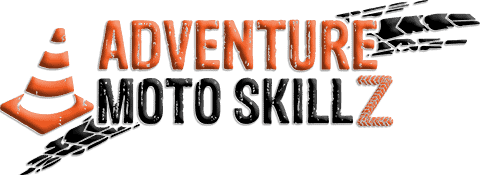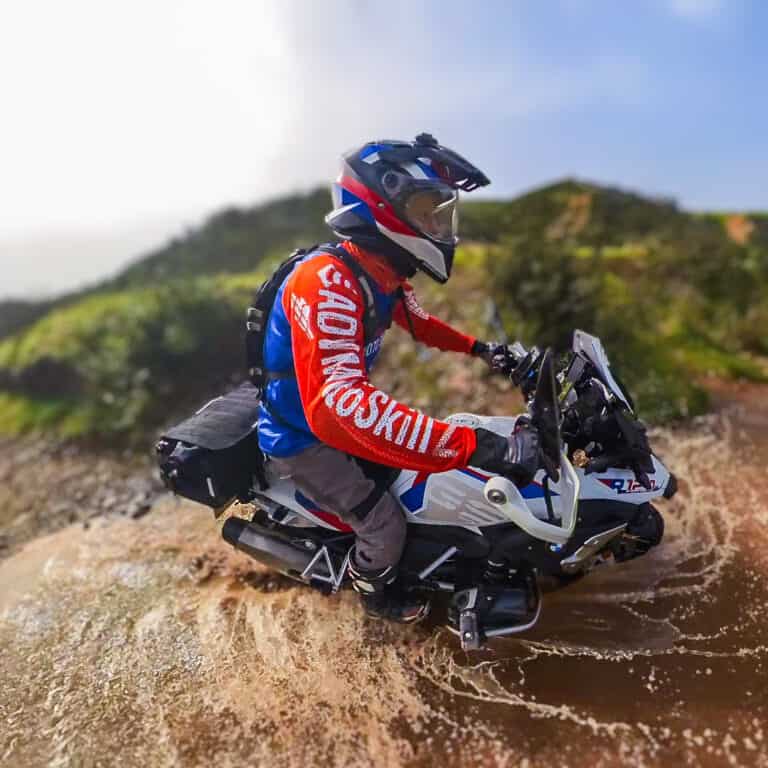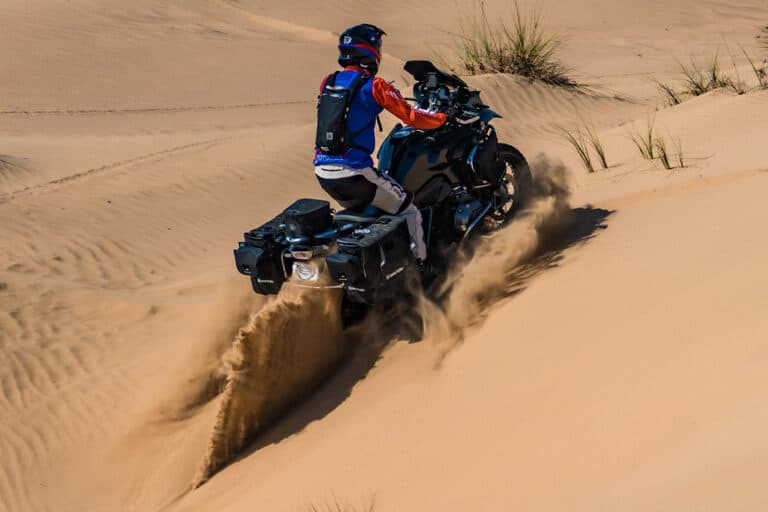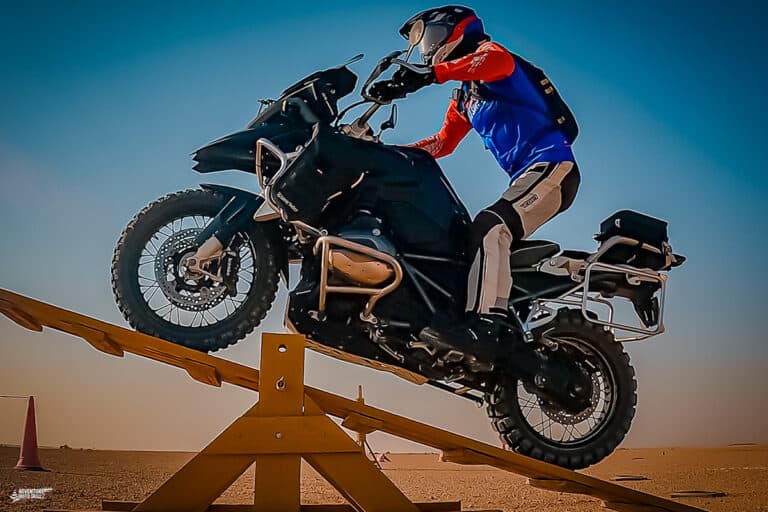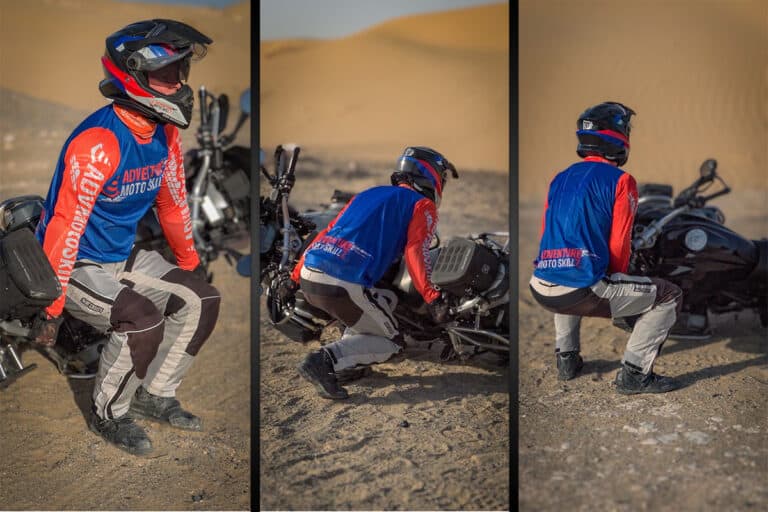Upper Body Posture Tips for Off-Road ADV Motorcyclists
If you feel like you already have excellent foot, knee, and hip posture yet still lose balance on tight turns or fail to keep traction on hills, this article is for you. An off-road rider’s upper body position plays an equally significant role as we strive to maintain balance, comfort, and control.
Use your upper body to stay in control during off-road motorcycle riding by keeping your shoulders synchronized with your hips and your head over your shoulders during standing riding position. Never lock out your elbows or overextend your wrists for maximum comfort and flexibility.

In previous posts, we’ve reviewed proper foot-on-peg position (here), as well as knee and hip positioning (here) for standing off-road adventure riding. This post completes the conversation with a look at shoulders, elbows, wrists, and head by reviewing the same tips I teach my clients.
This post may contain Affiliate Links. Please see our Privacy & Disclosure Policy for more details.
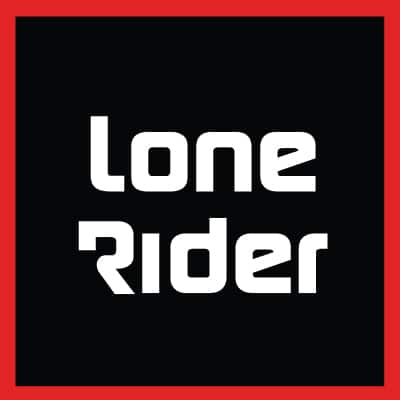
Top-quality gear for your next adventure
Used and recommended by ADVMotoSkillZ
Keep shoulders & hips in sync during standing off-road ADV motorcycle riding
With so much emphasis on correct lower body posture, it’s easy to overlook the upper body. When riding flat straightaways, like many dirt roads, it will feel quite natural to keep your shoulders over your hips to remain in balance. However, when there are some hills or tight cornering thrown into the mix, this task is often forgotten.
Approximately 60% of our body weight lies above the hips (reference) Add onto that total the weight of your helmet, protective gear, and a full hydration backpack, and you are left with a lot of potential influence to your ride.
Let’s first consider off-road cornering:
As you shift your hips to the outside of the curve to counterbalance the bike, you must also shift your shoulders. Failure to transition the shoulders with the hips leaves a percentage of your body weight over the tank instead of over the peg where it’s needed. Have a look at this image below to see the results of this mistake.

Keeping the shoulders over the tank as the hips properly transition to the outside creates a compressed body posture that stresses your neck, shoulders, and lower back. The opportunity to fully counterbalance the bike is lost because all of your weight is not fully to the outside.
Fear of dropping the bike during tight corners is a common reason for making this mistake. If you struggle with the idea of dropping your bike during off-road rides, then check out this post where I answer the most common questions regarding fear of dropping the bike.
By allowing the shoulders to remain over the hips, we bring the majority of our body weight to the outside for counterbalancing the weight of the motorcycle. Appropriate bike lean angle can then be achieved to contribute to a smooth and successful turn or corner.

Examine in the picture above how the whole torso is off to the side of the bike, with a tall back and an open chest (no hunched-over posture). Shoulders are relaxed and in a great position to react to any surprise bumps or ruts. Lastly, the transitioning of the shoulders allows for the head the remain better centered over the body to improve rotation and reduce fatigue.
Next, let’s consider hills and how shoulder positioning can contribute to gaining and maintaining traction.
During uphill climbs, the shoulders will transition forward with the hips to put weight onto the front tire. It is common to have a bend in the elbows as you transition your torso forward. Conversely, during steep descents, the arms will be outstretched to get the shoulders as far rearward as possible. This rear shift of hips and shoulders combines to weight the rear wheel and gain as much traction as available.

Elbows remain flexible to absorb off-road terrain
During both seated and standing riding, always avoid having elbows maximally extended. The rigidity and stiffness of fully locked elbows will limit your ability to remain light on the bars and to react to quick changes in terrain.
Instead, keep a slight bend in the elbows and feel how your wrists and shoulders immediately feel more relaxed. This position will allow for smooth side-to-side motion needed off-road. If you are having difficulty maintaining this upper body posture, then consider adjusting your handlebar position to better meet our needs. We have a full post on bike ergonomics and fitting tips (here) if you need additional information on how to do that.
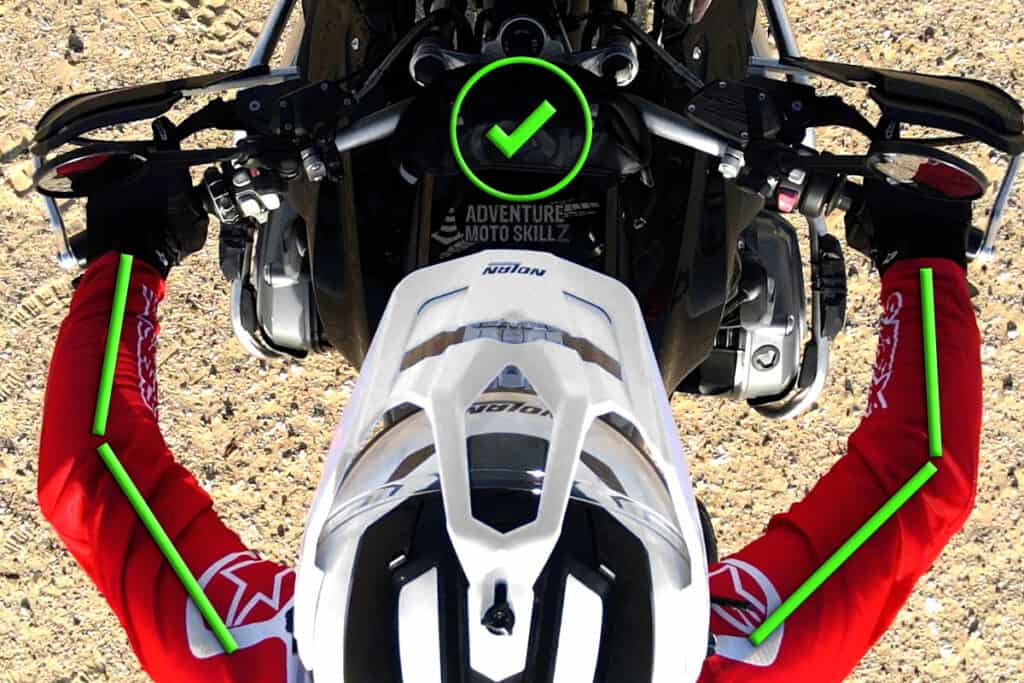
During cornering, the elbows will be dynamic in movement; good elbow positioning improves cornering and reduces shoulder stress. At the apex of a tight turn, the outside elbow should be positioned out and wide. There will be an approximate 90° angle at both the elbow and the shoulder. This will position the upper arm so that it is at least parallel to the ground (and sometimes higher).
The inside elbow will be extended as you transition into a counterbalance position. The amount of extension will vary based on arm length, handlebar setup, and turn radius.
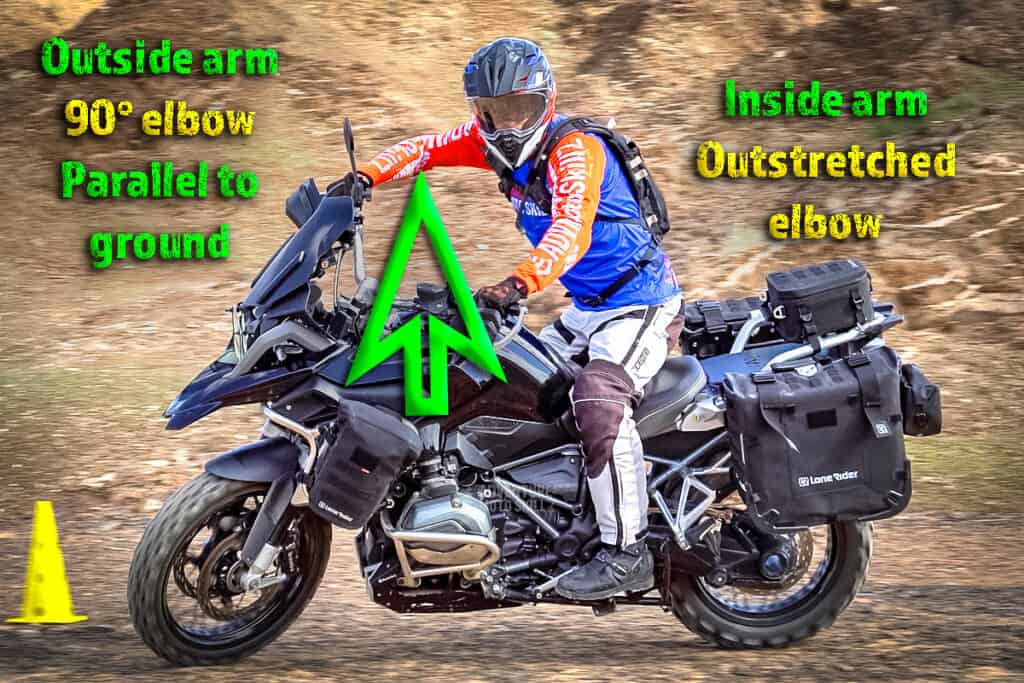
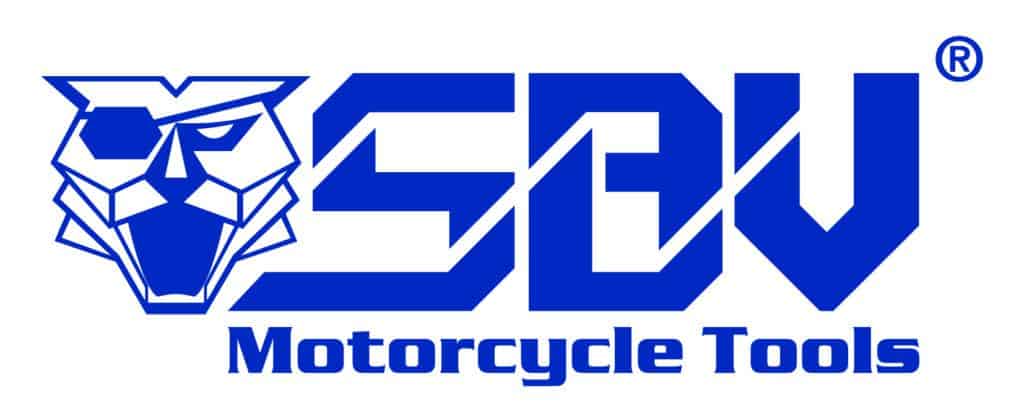
Innovative Motorcycle Tool Sets – Compact & Reliable
Used and recommended by ADVMotoSkillZ
Don’t allow wrists to bend backwards during standing off-road ADV motorcycle riding
Stand up on your pegs and reach down to grab the handlebars. If the handlebars are set too high, it can create a pinching at the wrist with too much backward bend. This position will tire your hands and wrist when traveling on varied off-road terrain and will limit your ability to quickly react with needed steering or control inputs.
Set your handlebars so that when you reach down for them, there is a comfortable and effortless grab with very little backward wrist bend. This grip keeps you light on the bars and flexible enough to offer steering, throttle, brake, or clutch control with ease.
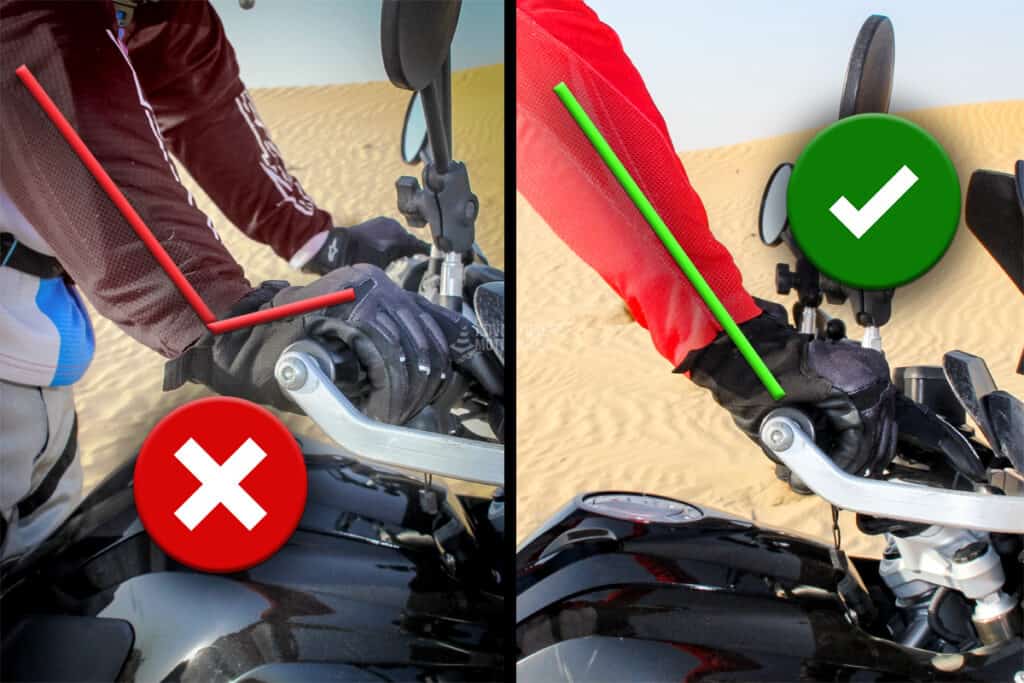
Keep head over shoulders during standing off-road ADV motorcycle riding
We have finally reached the top! The average head and neck comprise about 8% of our body weight (reference). So we have the weight of a bowling ball covered with a helmet that must also be managed during our twisting and bouncing off-road adventures. Get this wrong and it’s a real pain in the neck.
Keep your head up tall when riding to allow your shoulders to best support the weight and reduce neck fatigue. By keeping your head up it will also be easier to look around, scan your surroundings, and make great line selection choices out on the trails.
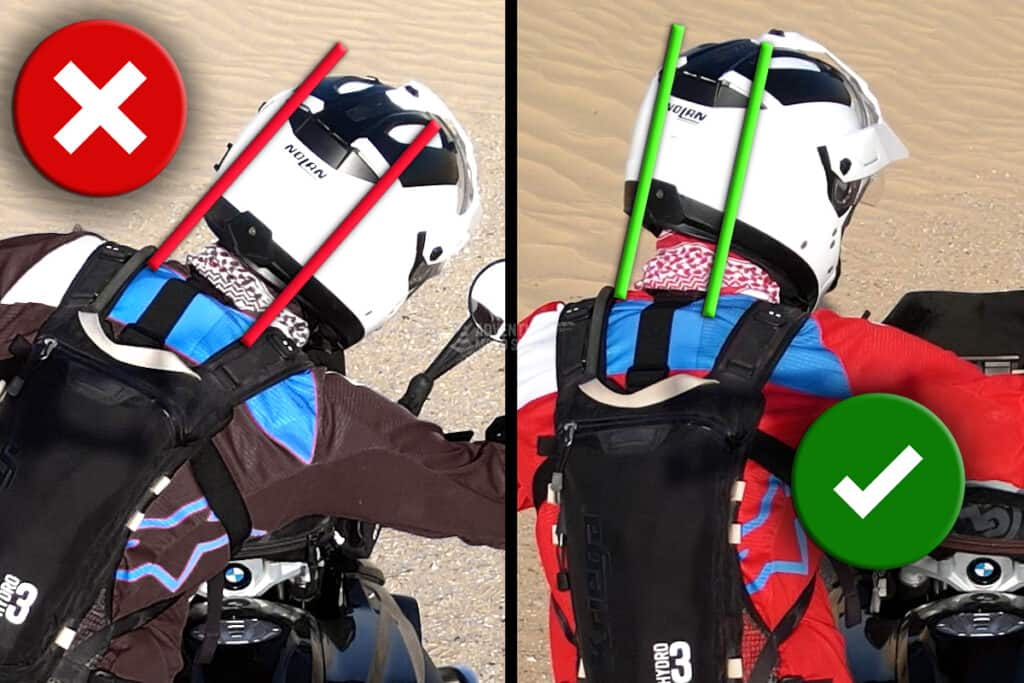
FINAL THOUGHTS – One of the best ways to assess your body posture is to use a smartphone or GoPro to video your practice sessions. Watching back your training and self-assessing your positioning is a great way to spot and correct small mistakes. Be sure to allow imperfections for any physical limitations, such as old shoulder injuries and the like. Strive to achieve your own best body positioning with these tips on your next ride!
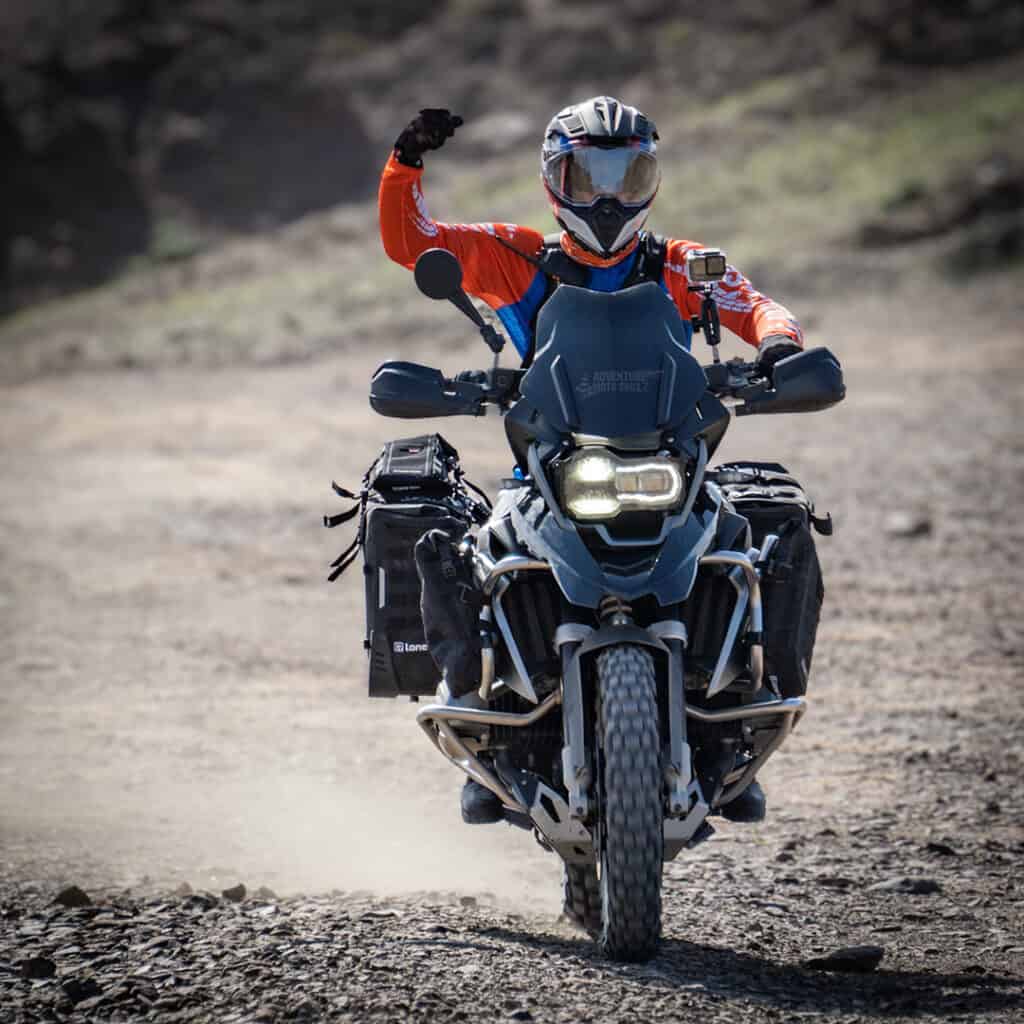
About the Author
Coach Mike is a Certified Off-Road Motorcycle Instructor & founder of ADVMotoSkillZ.
Riding tips from ADVMotoSkillZ reach thousands of international riders daily through social & blogs.
Click here to learn more about Mike’s motorcycle evolution from a Harley road rider to finding his true passion for off-road riding on a BMW 1200 GS.
If you would like to send Mike a quick message or invite him to provide training at your local facility, then visit the contact page here.
